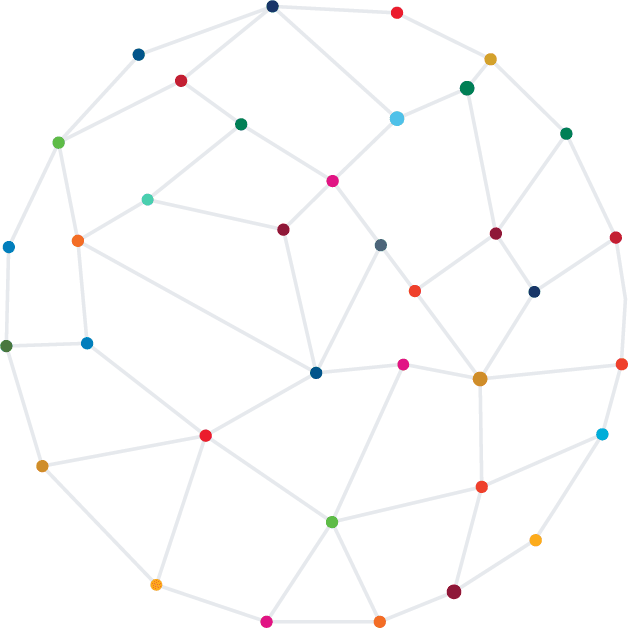Creating a road map for the most circumstantially suitable and contextually appropriate sustainable human-ecological welfare intervention
WHAT’S N.E.W. MODEL ?
As a supplement to the mainstream SDG chase, we would like to introduce New Era World Model. Building on the experience of Millennium Development Goals’ failure and leaning more towards the Sustainable Development Goal (SDG) framework, the proposed New Era World Model establishes a realistic and robust approach to ensuring human and ecological well being. This is a localized model focusing on one unit (community) at a time, leveraging local specificities of the place, people, culture and religion for the most efficient and sustainable outcomes in addressing the thematic concerns of the SDGs. N.E.W. aims to create communities that are economically empowered, socially responsible and environmentally sustainable.
N.E.W. Model is about breaking the vicious cycle of the development crisis to ensure that these 17 goals are met simultaneously and that the ‘chicken or egg’ conundrum of current day development is addressed.
With the understanding that we need to create and enhance receiving capacity of communities first before making an investment, N.E.W. Model focuses on establishing the level of receiving capacity of a community and then the priorities are lined up. Each and every goal among the 17 goals is interdependent to other goals and has its own impact on other goals. Health related goals couldn’t be met without meeting education goals, which again cannot be met without meeting poverty eradication related goals and the chain goes on.
Now, based on this intricate nature of web of human welfare, N.E.W. Model proposes a design that acts as a compound domino effect unit, or rather a complex Rube Goldberg effect unit. The intervention on each goal is designed in such a way that it is deliberated to positively impact most of the other goals and the reaction of secondary and subsequent impact is utilized to its maximum potential. This means maximum output with minimum input.
WHAT'S N.E.W. MODEL ?
As a supplement to the mainstream SDG chase, we would like to introduce New Era World Model.
Building on the experience of Millennium Development Goals’ failure and leaning more towards the Sustainable Development Goal (SDG) framework, the proposed New Era World Model establishes a realistic and robust approach to ensuring human and ecological well being. This is a localized model focusing on one unit (community) at a time, leveraging local specificities of the place, people, culture and religion for the most efficient and sustainable outcomes in addressing the thematic concerns of the SDGs. N.E.W. Model aims to create communities that are economically empowered, socially responsible and environmentally sustainable.
N.E.W. Model is about breaking the vicious cycle of the development crisis to ensure that these 17 goals are met simultaneously and that the ‘chicken or egg’ conundrum of current day development is addressed.
With the understanding that we need to create and enhance receiving capacity of communities first before making an investment, N.E.W. Model focuses on establishing the level of receiving capacity of a community and then the priorities are lined up. Each and every goal among the 17 goals is interdependent to other goals and has its own impact on other goals. Health related goals couldn’t be met without meeting education goals, which again cannot be met without meeting poverty eradication related goals and the chain goes on.
Now, based on this intricate nature of web of human welfare, N.E.W. Model proposes a design that acts as a compound domino effect unit, or rather a complex Rube Goldberg effect unit. The intervention on each goal is designed in such a way that it is deliberated to positively impact most of the other goals and the reaction of secondary and subsequent impact is utilized to its maximum potential. This means maximum output with minimum input.
Our vision is to create an efficient intervention approach that can transform communities into economically empowered, socially responsible and environmentally sustainable entities while maintaining the culture’s dignity.
This is all planned together with the communities, taking consideration of the fact that every single community, tribe, ecological unit has its own unique sets of challenges and opportunities. The idea of building onto what is already there in the community is what makes N.E.W. Model a highly respectful, acceptable, participated, inexpensive and efficient model.
OUR OBJECTIVES
- To review development interventions and understand efficient or inefficient approaches
- To run controlled tests for the efficiency of specific approaches and tools for human welfare and sustainability interventions in pilot communities
- To monitor, evaluate and document the constant process of change (deemed positive and negative both in reference to the program goal) brought by each unit of intervention
- To create a road map for the most circumstantially suitable and contextually appropriate sustainable human-ecological welfare intervention
- To showcase the successful transformation of communities into economically empowered, socially responsible and environmentally sustainable entities that can inspire transformation within communities across the developing world
- To replicate and propagate the model in other communities for gradual but consistent progress

- NO POVERTY 100%
- ZERO HUNGER 100%
- GOOD HEALTH & WELLBEING 100%
- QUALITY EDUCATION 100%
- GENDER EQUALITY 100%
- CLEAN WATER & SANITATION 100%
- AFFORDABLE & CLEAN ENERGY 100%
- DECENT WORK & ECONOMIC GROWTH 100%
- INDUSTRY INNOVATION & INFRASTRUCTURE 100%
- REDUCED INEQUALITIES 100%
- SUSTAINABLE CITIES & COMMUNITIES 100%
- RESPONSIBLE CONSUMPTION & PRODUCTION 100%
- CLIMATE ACTION 100%
- LIFE BELOW WATER 100%
- LIFE ON LAND 100%
- PEACE JUSTICE & STRONG INSTITUTION 100%
- PARTNERSHIPS FOR THE GOAL 100%
